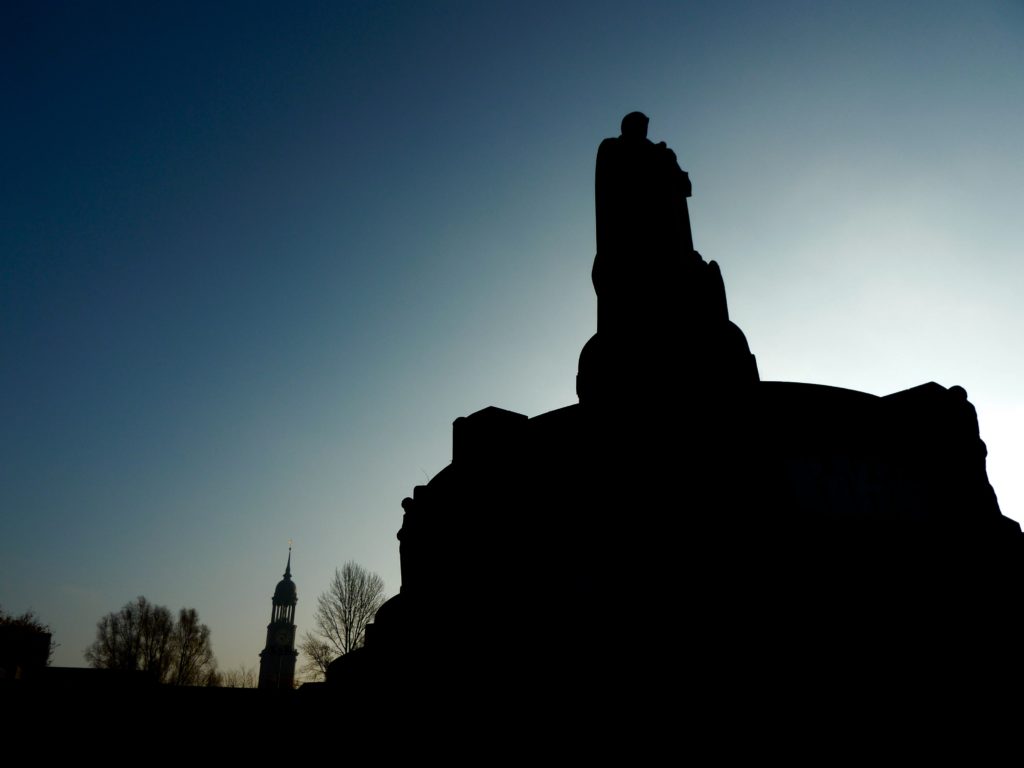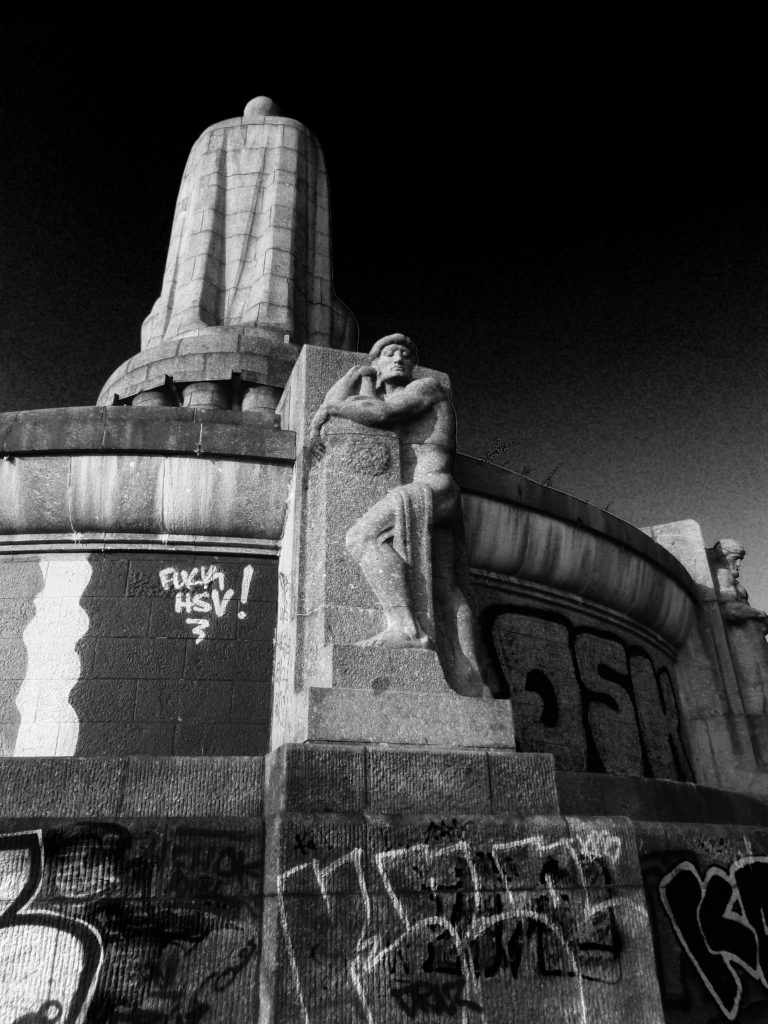A Tell-All Statue in Hamburg Reveals Everything

A large statue of Otto von Bismarck, the 19th-century leader who unified Germany as a nation, looks ever so slightly like the Batman. Hamburg, Germany. Photo credit: M. Ciavardini
Now that Hamburg is more than a footnote in travel guidebooks, thanks to the recently completed wind-in-its-sails Elbphilharmonie building, Hamburg’s status as a green city, and the fact that it is easily navigated and offers plenty of fun activities and attractions with historic significance, visitors might be interested to learn what unexpected treasures are found within its bounds. The old red-light district near a street called Reeperbahn, home, as it was, to prostitutes, musicians, and Catholics, presents a lively atmosphere. Go for a walking tour where the Beatles got their start.
Also in the St. Pauli quarter, a tourist can get a sense of German might—and, perhaps, a better understanding of its citizens’ take on unification, both past and present. There, in the park known as the Alter Elbpark, is a 150-feet-tall statue of the country’s founder, looking both very intimidating and an awful lot like Batman.

A 150-feet tall granite statue of ‘Iron Chancellor’ Otto von Bismarck was erected in a park in Hamburg around 1905. Photo credit: M. Ciavardini
Otto von Bismarck, known as the Iron Chancellor, is credited with unifying Germany and with being a bit of a warmonger, having engaged in skirmishes with Austria, Denmark, and France. People are still sometimes surprised to learn that Germany didn’t actually become Germany until 1871, long after the United States was created. How could a country that has been around for centuries still be so new? For a long time, it was made up of city-states (indeed, Hamburg is at least 1200 years old), much like Italy was. Known for many years as Prussia, the country became Germany after its unification, and von Bismarck became its first chancellor.

Although Otto von Bismarck is a founding father of Germany, a monument to him in Hamburg is covered in graffiti. Photo credit: M. Ciavardini
Interesting, then that just 43 years later this new nation was embroiled in its first World War, and then less than a generation later, its second—which resulted in a disunification. East and West Germany, divided up after World War II, lasted until 1989, when the Berlin Wall fell. Germany was formally unified once more the next year.

Even an explanatory plaque at the base of the Bismarck monument in Hamburg has been defaced. Photo credit: M. Ciavardini
That’s a lot of historic significance for one statue, even as monster-sized as it is. Imagine a big George Washington in this pose. Then envision a big George Washington statue like this one covered in graffiti at the base, as this one was on my visit. Kinda tells you something about how much people care about Bismarck, doesn’t it? Or maybe I’m reading too much into a granite canvas in a little park in Hamburg.
Otto von Bismarck Monument, Alter Elbpark, Seewartenstraße, 20459 Hamburg, Germany
—Lori Tripoli

